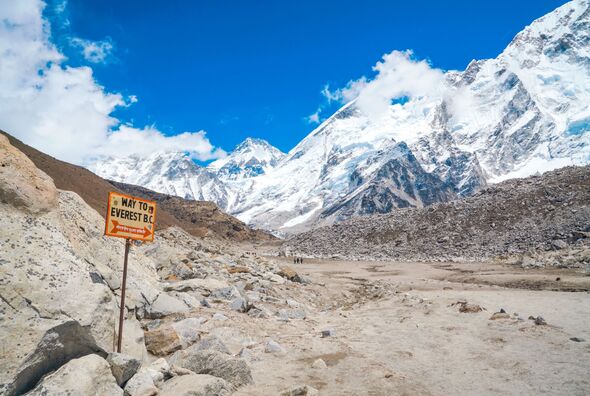Despite the difficulties – and fatalities – of reaching the altitude of 8,848 metres above sea level, videos of overcrowding and “traffic jams” have gone viral, instead of where one would expect to be rewarded with peace and loneliness.
With more and more people visiting it each year, Mount Everest has grown increasingly polluted, with contamination of the local watershed, which has now begun to threaten the health of local people who use it as an important water source.
“They all say it’s lonely at the top. But when you actually start climbing to the top of the world, it’s far from lonely. In fact, it can be very, very crowded,” said Sanya Kundra to Mint, who climbed up to the Everest Base Camp in 2024.
In Nepal, Mount Everest – also known as “Sagarmatha”, or “forehead in the sky”, stands at 8,848 metres and its the highest mountain above sea level in the world. It forms part of the Himalayas, which span 1,500 miles and run through six Asian countries. The trek usually takes anywhere between 45 to 60 days.
Edmund Hillary and Tenzing Norgat were the first recorded people to reach the summit in 1953. Since then, thousands of visitors have flocked to the mountain, and it is starting to take its toll. Today, Everest is so overcrowded and full of trash that it has been called the “world’s highest garbage dump.”
Annually, about 600 attempt to climb to the summit, while over 40,000 make the trek to the Base Camp. During the peak season, theSagarmatha National Park – created in 1976 to protect the mountain and its wildlife, and it earned UNESCO World Heritage status in 1979 – receives as many as 500 people per day intending on making the hike.
Such a high volume of footfall has resulted in the eroding of footpaths.
Back in 2013, you might expect to be stuck in a jam for about five minutes, “if somebody was changing anchors or sat down,” said Prem Kumar Singh, a mountaineer who completed the climb to the peak of Mount Everest 11 years ago. “In 2013, it wasn’t that crazy to be frank, at least not as much as pictures today seem to show,” he said while speaking to Mint.
The mountain is now so overcrowded that very often climbers are forced to stand in line for hours in freezing conditions to reach the top, where the air is so thin that an oxygen mask is needed. They are forced to walk single-file over the Hillary Step, and upon reaching the summit there is barely any room to stand due to the overcrowding.
“You would rarely see pictures of overcrowding at the trail to base camp,” Prem Kumar Singh explained, “because that’s a wide trail. You don’t have to follow a line, you can stop, you can spread out.
“But ahead of base camp, most of the trail is fixed with a safety line… most climbers will be required to stick to the line. Because there’s only one rope going up, it becomes very crowded.
“The speed of the line starts to be dictated by somebody ahead of you who may be slower. If they’re not walking fast enough for your pace or are unable to let you pass, your speed will start to suffer due to that. 20 people down the line, that clogs the entire area.”
In 1991, the Sagarmatha Pollution Control Committee (SPCC) was founded to help keep the Khumbu region clean, in part through the management of controlled waste collection sites such as a pit at the village of Lobuje near Everest.
During the several weeks each person spends on the mountain, it is understood that they generate, on average, around eight kilograms of rubbish. The majority of this is left on the mountain, leaving the slopes littered with food containers, empty oxygen tanks and even human faeces. Indeed,the final toilet facilities are found at Base Camp. After that, climbers have to relieve themselves on the mountain itself.
Water contaminated with faecal matter is known to cause the spread of deadly waterborne diseases including cholera and hepatitis A, which is being washed into the local waterways.
Both government and non-government organisations are continuing to attempt to clean up the mess. In 2019, the Nepali government launched a campaign to clear 10,000 kilograms of rubbish, while anyone visiting Mount Everest has to pay a £3,142 deposit, and the money is refunded if the person returns with eight kilograms of rubbish.
There is of course, the dangerous impact on humans for such traffic jams. “In such frigid temperatures, if you don’t walk, your body starts to feel cold, your fingers, toes and nose start to freeze. You can get hypothermia, frostbite and other cold-inflicted issues if you’re not warm enough.”
Indeed, the most common causes of death on Everest are mountain sickness, falls, avalanches, exhaustion and hypothermia. In 2023, 18 people died on the mountain, the highest number on record.
It was also the year that Nepal granted the record number of permits at 466. Currently, there is no cap on the number of permits which can be issued. Each permit is a huge source of income for Nepal, while over one million workers rely on tourism as a source of income, according to Mint.
According to reports, Nepal’s highest court has ordered the government to start limiting the number of permits issued, while also making it mandatory for all climbers to wear a tracking device.
